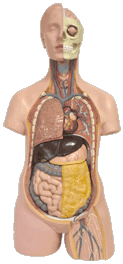At WiseGEEK, we're committed to delivering accurate, trustworthy information. Our expert-authored content is rigorously fact-checked and sourced from credible authorities. Discover how we uphold the highest standards in providing you with reliable knowledge.
What Factors Affect Flecainide Dosage?
Flecainide dosage can depend on a patient’s condition, age, and weight. This medication treats abnormalities in heart rhythm like ventricular tachycardia. It can promote arrhythmia, or heartbeat disturbances, in some patients, so a doctor may only recommend it when a patient experiences disabling symptoms in connection with an abnormal heart rhythm. In these cases, the benefits of taking the medication usually outweigh the risks, as the patient could experience severe injury or death without the medication.
Oral and intravenous forms are available. A doctor may start the patient on an intravenous form in the hospital in an emergency, and then switch to an oral form as the patient stabilizes. Some doctors require monitoring in a hospital environment for the first few days on the drug. For patients who are not already hospitalized, this can require a brief hospital stay, or an agreement to work with a home care provider, while adjusting to the medication.

In children, flecainide dosage is typically based on weight, to make sure the patient does not get too much medication. This may require cutting pills to control the dosing. Patients over the age of 18 can be treated with a more standard dosing regimen, unless they are unusually underweight. If there are doubts about the safety of the standard recommended dose, the doctor may weigh the patient and calculate a dose on the basis of weight to reduce the risks of an overdose.
Adult patients may start on a dose as low as 50 milligrams. A doctor calculating a flecainide dosage may want to start as low as possible and gradually increase to the point where the patient’s heart rate stabilizes. Some doctors also request blood testing to check the plasma concentrations of the drug. This allows the patient to take the lowest possible dose while still receiving benefits. Fewer side effects may be experienced at low doses, an important consideration.
The patient’s underlying health can be something to consider when determining a flecainide dosage. The doctor wants to make sure the medication is not only necessary, but won't cause additional problems or symptoms. Patients with a history of congestive heart failure, for example, may be poor candidates for the drug. An existing electrolyte balance can also be a cause for concern, and it may be necessary to correct them before proceeding with medication. Liver and kidney disease may require a patient to take a lower flecainide dosage, or to watch carefully for signs of side effects.
AS FEATURED ON:
AS FEATURED ON:










Discuss this Article
Post your comments